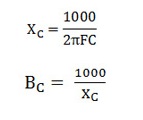What are the frequency bands for FR1 and FR2?
FR1, or Frequency Range 1, covers traditional cellular frequency bands below 6 GHz, including low, mid, and high bands, offering a balance between coverage and capacity. FR2, or Frequency Range 2, comprises mmWave frequencies, such as 26.5 GHz to 29.5 GHz, providing exceptionally high data rates but limited coverage due to higher frequencies’ reduced ability to penetrate obstacles like buildings. The choice between FR1 and FR2 depends on specific use cases, with FR1 being suitable for broader coverage, and FR2 delivering high capacity in dense urban areas and specialized applications.
FR1 (Frequency Range 1):
FR1, also known as Sub-6 GHz, covers the frequency bands traditionally used for cellular communications in previous generations such as 2G, 3G, and 4G LTE. The frequency bands within FR1 are typically below 6 GHz.
Here are some key frequency bands within FR1:
- Low Bands (600 MHz – 2.69 GHz): This includes frequencies around 600 MHz, 700 MHz, 850 MHz, 900 MHz, and 1.8 GHz. Low bands have good coverage and building penetration characteristics, making them suitable for wide-area coverage.
- Mid Bands (2.7 GHz – 3.7 GHz): This includes frequencies in the 2.7-3.7 GHz range, commonly referred to as the C-band and part of the S-band. Mid bands provide a balance between coverage and capacity, making them suitable for urban and suburban areas.
- High Bands (3.7 GHz – 6 GHz): High bands include frequencies from 3.7 GHz up to 6 GHz. This range is also known as the S-band and part of the C-band. High bands offer increased capacity but have reduced coverage compared to lower frequency bands.
FR2 (Frequency Range 2):
FR2, also known as mmWave (millimeter wave), covers much higher frequency bands compared to FR1. These higher frequencies enable extremely high data rates but come with limited coverage and reduced ability to penetrate buildings.
Here are some key frequency bands within FR2:
- N257 (26.5 GHz – 29.5 GHz): This frequency range is sometimes referred to as the 28 GHz band. It’s used in mmWave 5G deployments for high-capacity applications like fixed wireless access and dense urban environments.
- N260 (37 GHz – 40 GHz): The 37 GHz to 40 GHz range is another mmWave frequency band used for 5G, particularly in the United States.
- N261 (27.5 GHz – 28.35 GHz): This is known as the 28 GHz band and is used in some mmWave deployments.
It’s important to note that FR2 frequencies offer significantly higher data rates but have limited range and are easily blocked by obstacles, including buildings and trees. Therefore, they are typically used in conjunction with FR1 frequencies to provide both coverage and capacity in 5G networks.
In summary, FR1 encompasses the traditional cellular frequency bands below 6 GHz, while FR2 includes the mmWave frequency bands used for high-capacity 5G applications. The choice of frequency band depends on the specific use case and the trade-off between coverage and data rate requirements.


